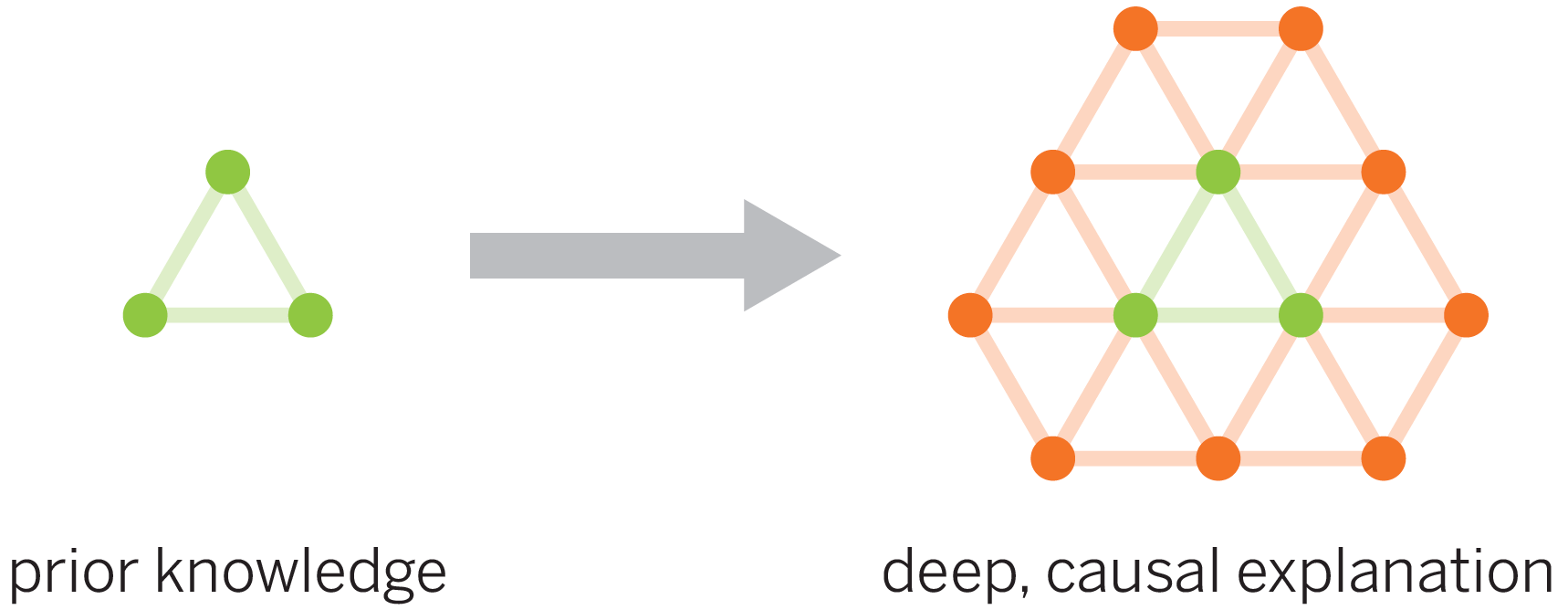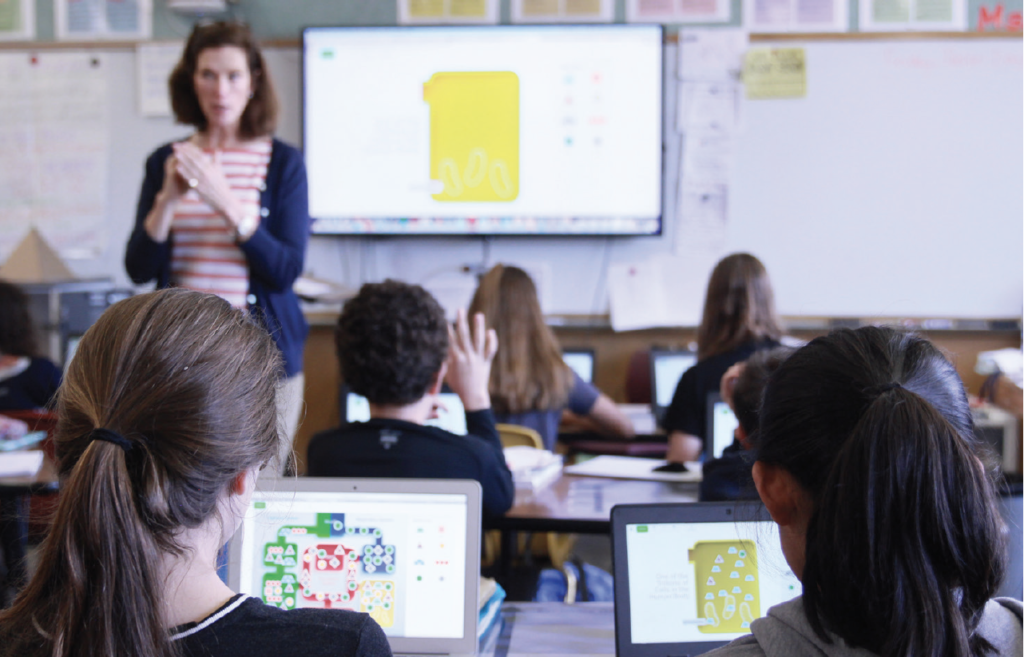Our approach
The Amplify Science approach adheres to the letter and spirit of the NRC Framework for K–12 Science Education (2012). Students build knowledge across disciplines in each year so that past learning is connected to new concepts, applied to new phenomena, and further developed in each successive year. The Framework-focused design of the Amplify Science curriculum is grounded in the following:
- Designed from the ground up for three-dimensional science instruction
- Emphasis on unit coherence
- Real-world problems and scientific phenomena
- Multimodal approach
- Explicit support for literacy development
- Expanding opportunities for visualizing
1. Designed from the ground up for three-dimensional instruction
The Amplify Science curriculum developers at University of California, Berkeley’s Lawrence Hall of Science crafted each unit, chapter, and lesson with the following questions in mind:
- What do we want students to figure out? (What disciplinary core idea (DCI) or part of a DCI?),
- How do we want them to figure it out? (What scientific and engineering practice will they engage in to figure it out?)
- What crosscutting concept can scaffold students’ understanding and connect it to other ideas about the natural world that they have learned?
This resulted in a curriculum that incorporates a strategic, well-balanced integration of the three dimensions.
2. Emphasis on unit coherence

Student learning experiences and assessments are grounded in a unit-specific learning progression called a Progress Build. A Progress Build clearly defines each level of students’ increasingly sophisticated understanding of unit phenomena students should reach as they progress through the unit. Students build that understanding through engagement with science and engineering practices and application of crosscutting concepts over the course of the lessons in the unit. Thus, as students investigate the anchor phenomena for each unit, they construct new knowledge the way scientists do: through engagement with a core set of professional practices and the application of prior knowledge.
- In the grade 1 Spinning Earth unit, students work as space scientists to figure out an explanation for why it is never the same time of day for a grandmother, who lives in Asia, as it is for her grandson in the United States when she calls him. Students record, organize, and analyze observations of the sun and other objects in the sky as they look for patterns and make sense of the cycle of daytime and nighttime.
- In the grade 2 Changing Landforms unit, students are recruited by the fictional director of the Oceanside Recreation Center, who recently got quite a scare when a nearby cliff collapsed. In their role as geologists, students research erosion and changes to the cliff over time to advise the director on whether it is safe to keep the center open.
- In the grade 5 Modeling Matter unit, students work as food scientists for the fictional company Good Food Production, Inc., where they are given two assignments related to food safety and new product. After separating a mixture and attempting to mix unmixable substances, students summarize their findings for the president of the company.
For additional examples of anchor phenomena, visit Unit phenomena and performance expectations and browse by grade level.
6. Expanding opportunities for visualizing

Through the thoughtful integration of cutting-edge technology, students of Amplify Science are empowered to visualize otherwise invisible scientific phenomena in new and exciting ways. Students have the ability to use technology in ways that real scientists and engineers would. For example, by visualizing sound waves traveling through the air in the grade 4 Sound Waves Simulation, and by studying solubility at the nanoscale in the grade 5 Modeling Matter Simulation, students have the ability to use technology in ways that real scientists and engineering would.